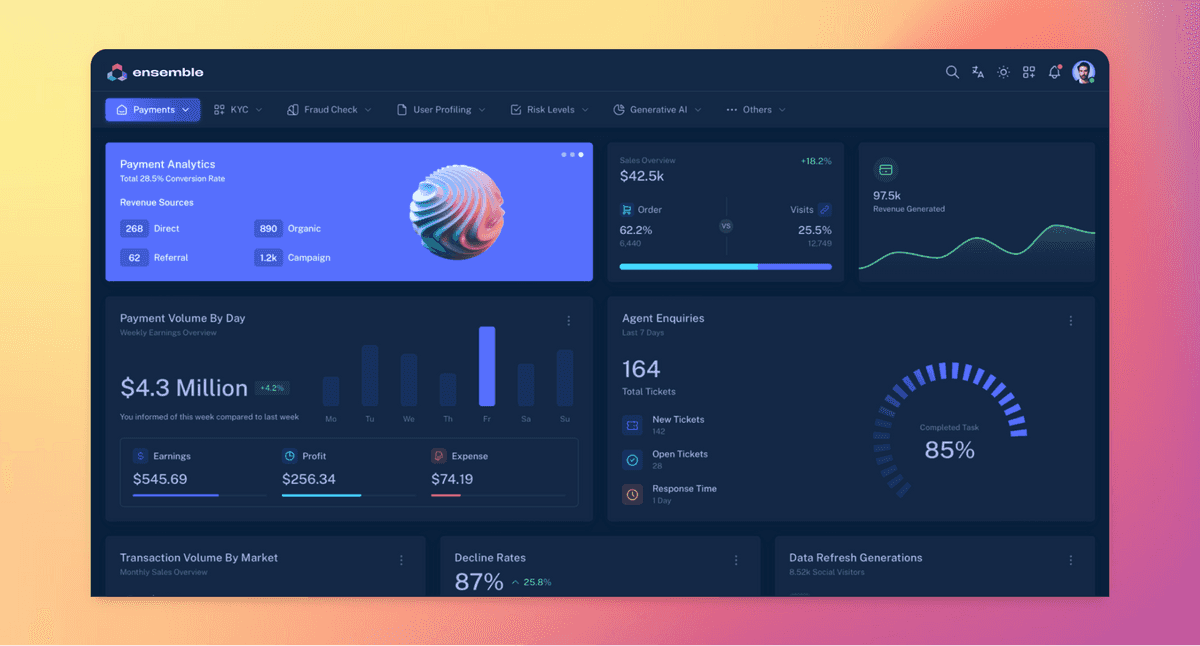
As businesses increasingly emphasize efficiency and speed in their supply chains, logistics companies must continuously evolve to meet these expectations.
Emerging technologies, such as blockchain, automation, and the Internet of Things, bring both opportunities and challenges, requiring logistics professionals to navigate a landscape of rapid innovation.
Additionally, the industry's global nature exposes it to geopolitical uncertainties, trade disruptions, and unexpected events, contributing to its dynamic and unpredictable nature.
Coordinating the intricate network of suppliers, manufacturers, carriers, and distributors while optimizing costs and ensuring timely deliveries further adds to the complexity, making the logistics industry both dynamic and challenging.
Innovating With Data and AI
Implementing real-time analytics in the logistics industry requires the integration of data from various sources, including GPS devices, sensors, and enterprise systems. It's essential to have a scalable and flexible IT infrastructure to handle large volumes of real-time data. Additionally, data security and compliance with regulatory requirements should be prioritized to protect sensitive information within the logistics ecosystem.
Example use cases include:
Route Optimization
Utilize real-time data on traffic conditions, weather, and road incidents to optimize delivery routes. Dynamic route planning helps reduce transportation costs, minimize delivery times, and improve overall fleet efficiency.
Inventory Management
Monitor real-time inventory levels and track stock movements within warehouses. Real-time analytics can provide insights into demand patterns, allowing for better inventory planning, reducing stockouts, and minimizing excess inventory.
Predictive Maintenence
Use real-time data from sensors on vehicles and equipment to predict maintenance needs. Predictive maintenance helps prevent breakdowns, extend the lifespan of assets, and reduce unplanned downtime.
Supply Chain Visibility
Implement real-time tracking of shipments and containers to provide end-to-end visibility into the supply chain. This includes real-time updates on the location, status, and condition of goods in transit, improving transparency for both logistics providers and customers.
Performance Analytics
Monitor the performance of logistics operations in real time, including key performance indicators (KPIs) such as delivery times, order accuracy, and fulfillment rates. This information enables quick identification of areas for improvement and the implementation of corrective measures.
Demand Forecasting
Analyze real-time data on order patterns, customer demands, and market trends to improve demand forecasting accuracy. This helps logistics companies optimize inventory levels and plan transportation resources more effectively.
Dynamic Allocation Of Resources
Use real-time analytics to dynamically allocate resources such as vehicles, drivers, and warehouse space based on changing demand patterns and operational requirements. This ensures optimal resource utilization and minimizes operational costs.
Real-time Visibility into Carrier Performance
Monitor the performance of carriers in real time, including transit times, delivery accuracy, and adherence to schedules. This allows logistics providers to make informed decisions about carrier selection and negotiate better contracts.
Last-Mile Delivery Optimization
Optimize last-mile delivery by using real-time data to adjust routes, reroute deliveries based on changing circumstances, and provide customers with accurate estimated delivery times. This enhances customer satisfaction and reduces delivery costs.
Customer Service and Communication
Utilize real-time analytics to provide customers with up-to-date information on shipment status, delivery times, and any potential delays. Proactive communication helps manage customer expectations and enhances overall customer satisfaction.
Risk Management
Monitor real-time data for potential risks such as weather events, geopolitical issues, or supply chain disruptions. This allows logistics companies to proactively address challenges and implement contingency plans to minimize the impact on operations.
Technical Foundations
Unfortunately, traditional tools and approaches to data and analytics do not scale to deliver solutions like this.
There are too many delays in the process, and the systems often used are not performant enough to process high volumes of data with low latency. In addition, traditional business intelligence tools are not rich and flexible enough to meet the business demands.
This technology stack needs to be re-invented for the cloud, with tools and architectural patterns that are built for real-time advanced use cases and predictive analytics:

Introducing Ensemble
We are Ensemble, and we help enterprise organisations build and run sophisticated data, analytics and AI systems that drive growth, increase efficiency, enhance their customer experience and reduce risks.
We have a particular focus on ClickHouse, the fastest open-source database in the market, which we believe is the fastest best data platform for systems like this.
Want to learn more? Visit our home page or download our free report that describes the process for implementing advanced analytics in your business.



